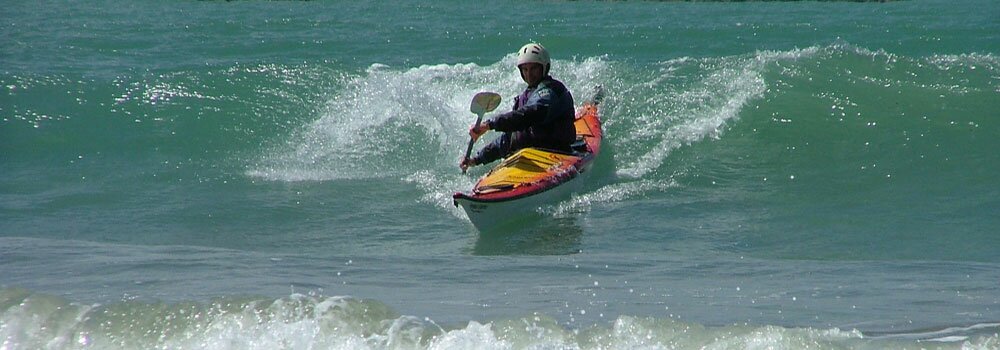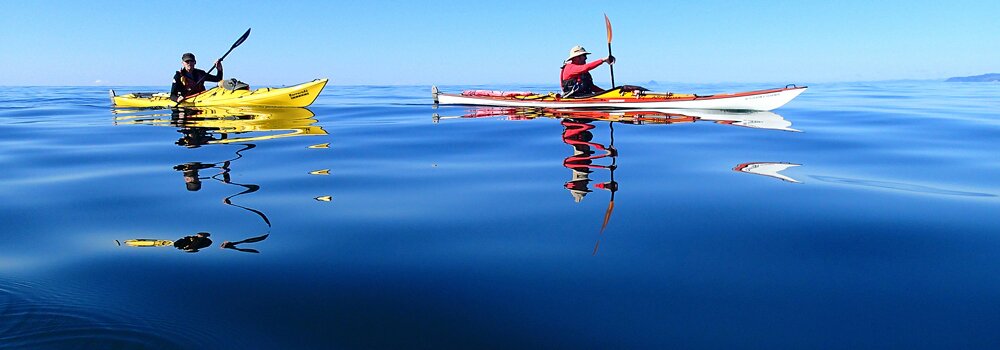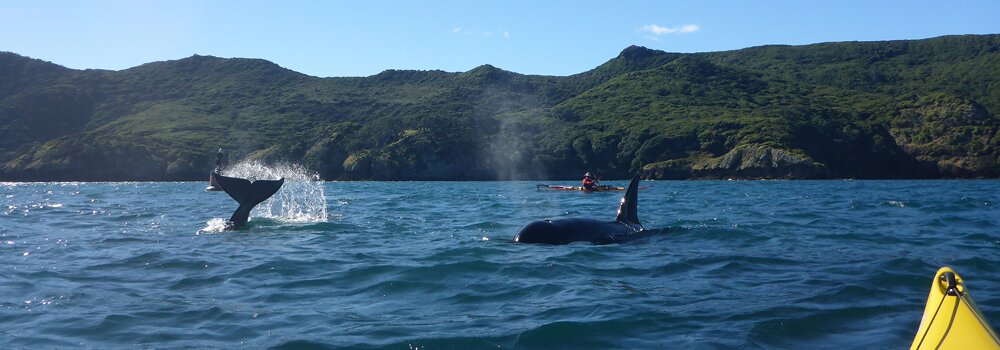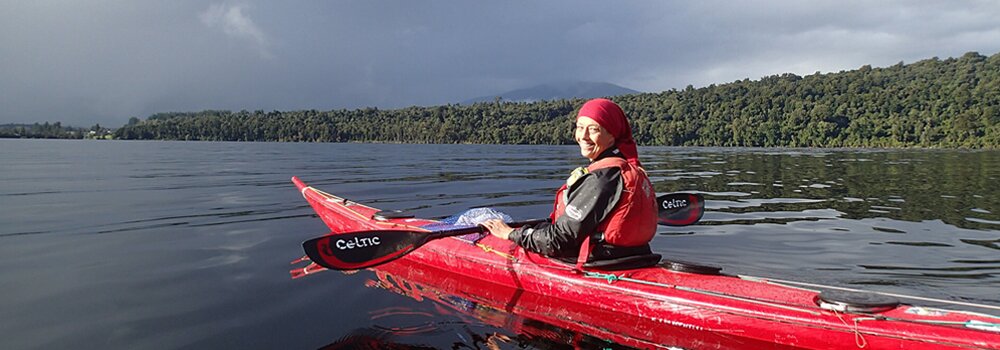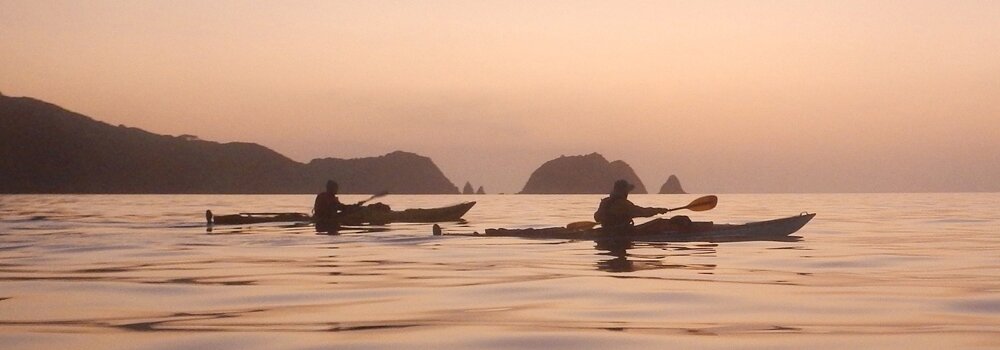Other Safety Items
Decklines
At a recent forum, during rescue practice, it was noticed how many kayaks had decklines fitted that were too tight to be grasped or used for holding on to the rescued kayak. It is better to have lines too loose than too tight. The lines on many models of kayaks are set up tight in the showroom but need to be set up ready for use by the user. They should be loose enough to allow an arm between the line and deck. This will allow a rescuer to thread their arms through a line on each side of the kayak, rest their weight on the deck, thus locking themselves on to the rescued kayak so it cannot capsize in either direction.
Another use is with one arm looped through the deckline by the cockpit while rigging a paddle float. This will keep the paddler in contact with the kayak and still allow the use of both hands.
There are some models of kayaks without any decklines, the older Contours being the worst offenders. A smooth plastic hull is impossible to hold when the paddler is in the water. If bungies are fitted, they are not a secure method of holding on to a kayak.
Paddle securing straps for paddle-float recovery
Paddle securing straps mounted on each side aft of the cockpit for securing the paddle during a paddle-float recovery must be adjusted before leaving the shore. They are not easy to adjust and would cause excessive delays if you try to adjust them at sea while trying to fit the paddle.
Leapfrogging and John Wayne – self rescues
One of the self rescue methods often referred to is the John Wayne method and the implication that cowboys leaped on to their horses over the back. They do if they are the Lone Ranger and Tonto as sometimes seen on a TV commercial in 2004. Note that John Wayne did not play the part of the Lone Ranger and this part was played, for the film and TV versions by Clayton Moore, John Hart and Klinton Spillsbury. The TV series opened with a few bars of the William Tell Overture.
A more descriptive term for the “over-the-stern” recovery would be the Leapfrog.
Of all the recovery methods, it is the least likely to succeed in conditions that made it necessary in the first place.
KASK's aims are to:
1. Promote and encourage the sport of sea kayaking2. Promote safety standards
3. Develop techniques and equipment
4. Deal with issues of coastal access and protection
5. Organise sea kayak forums around the country
6. Publish the Sea Canoeist Newsletter and the KASK Handbook
